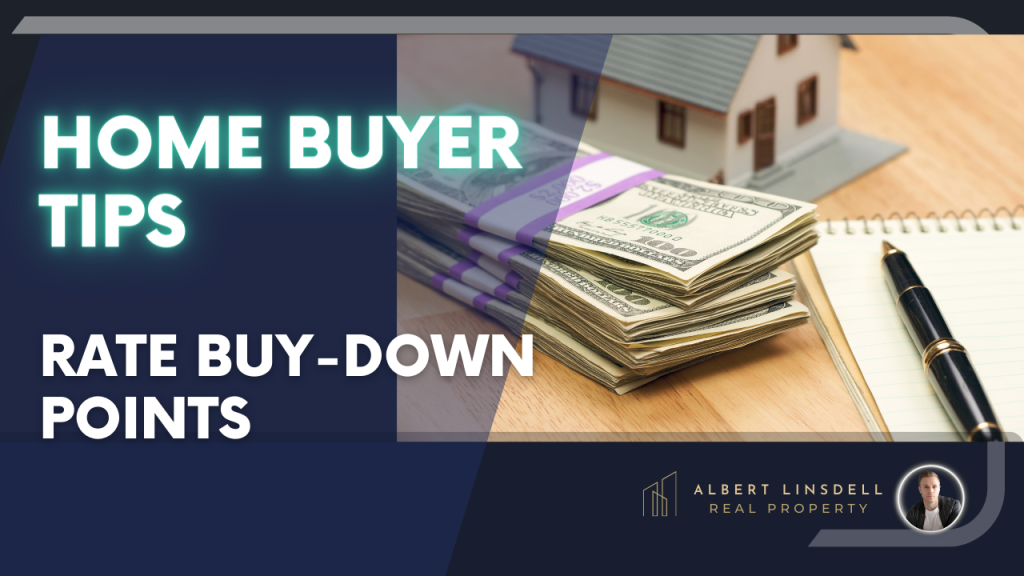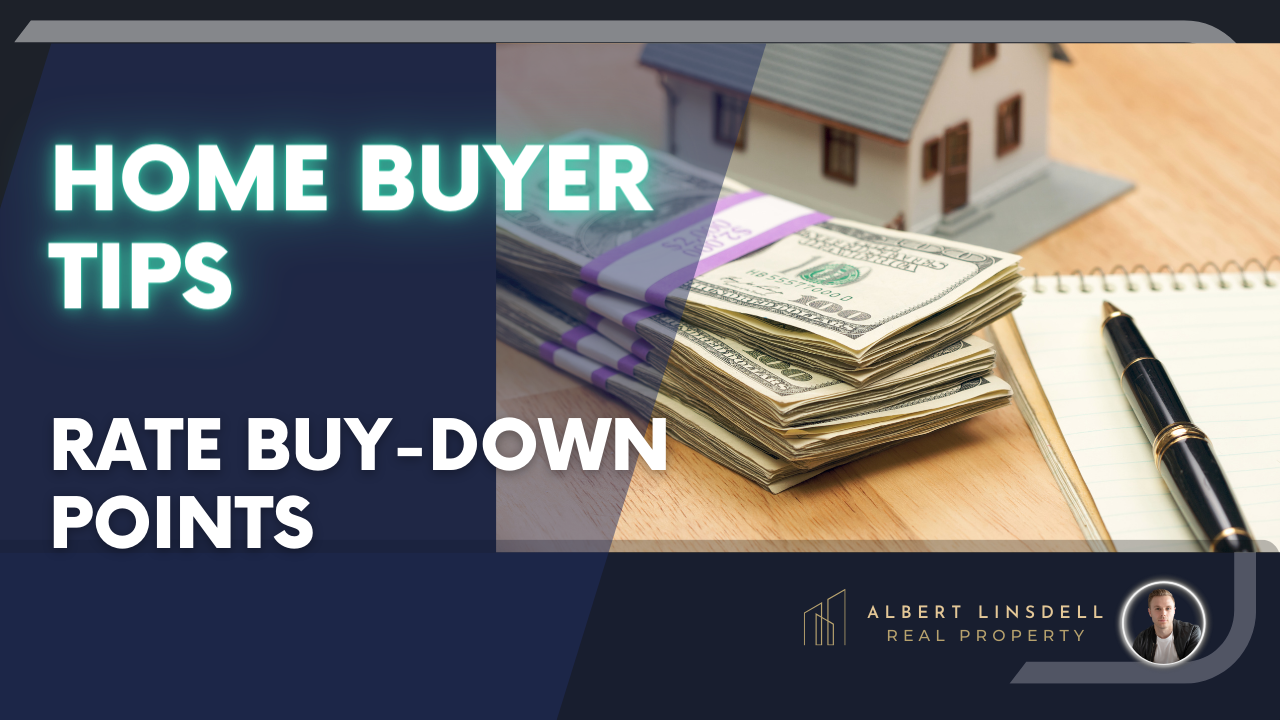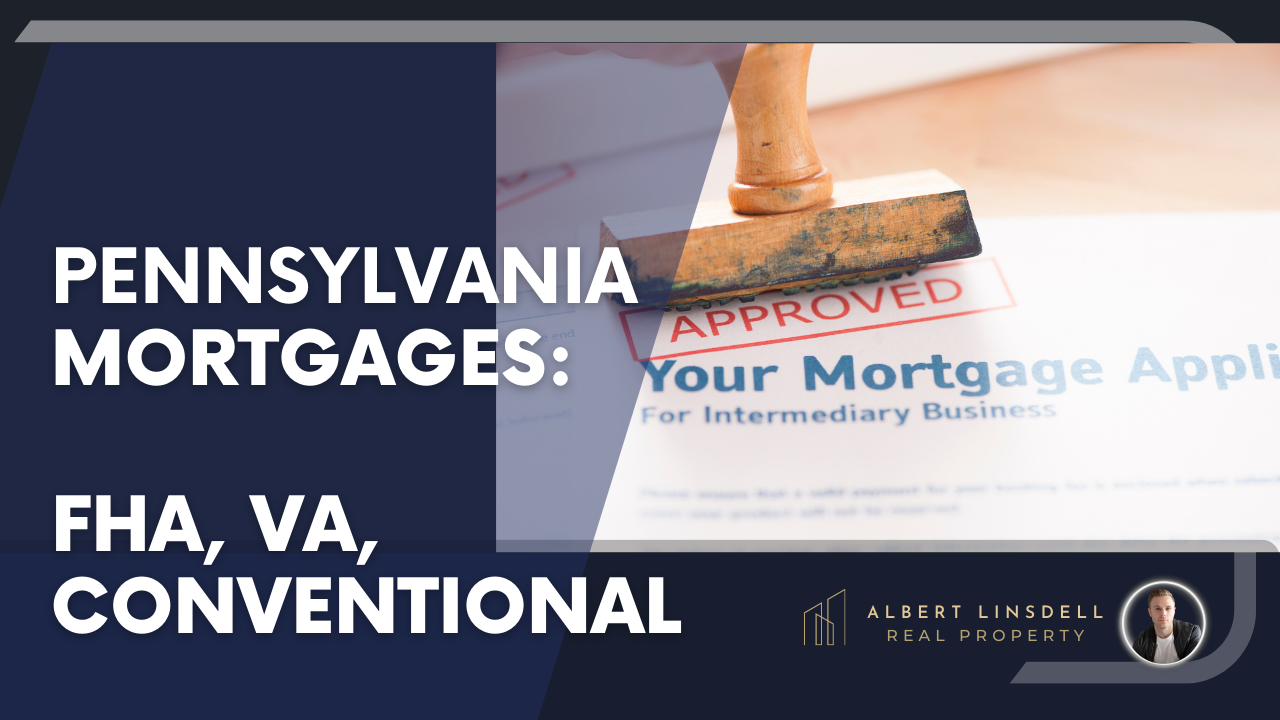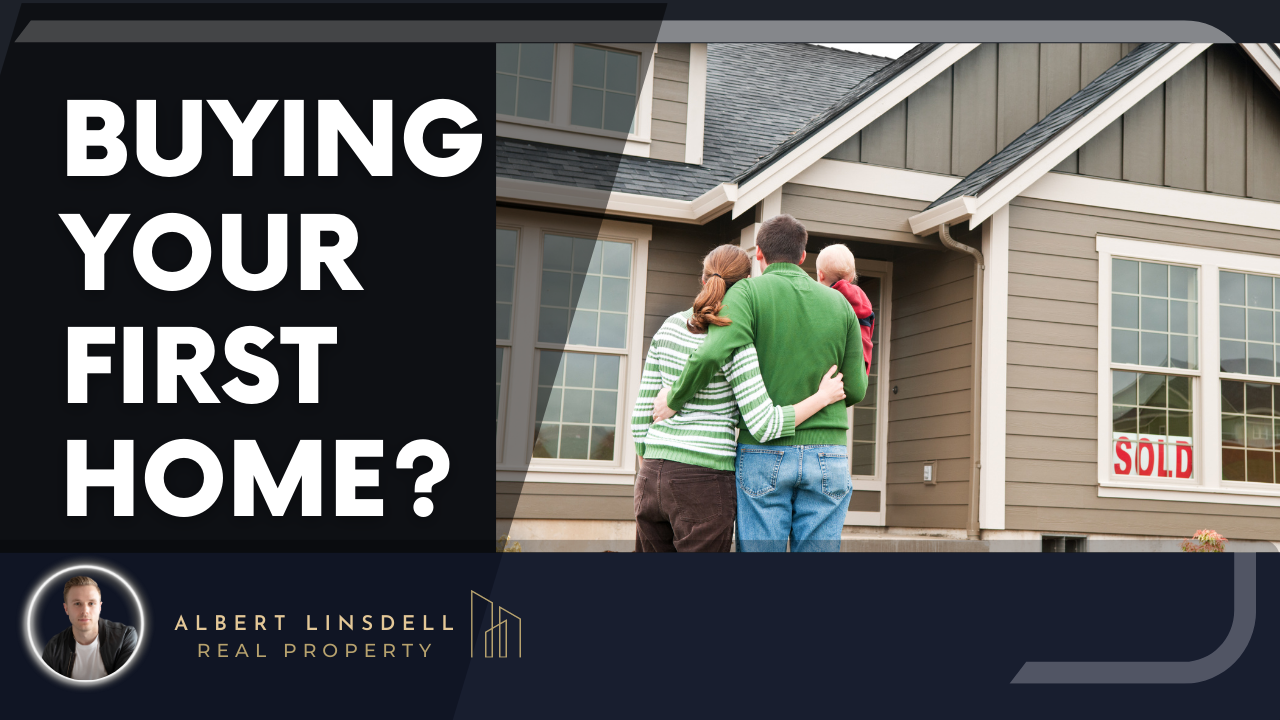What is a Mortgage Rate Buy Down?

Save $10,000's or shorten your loan by 6 years
Buy-down you rate and save $10,000s
For many homebuyers, particularly in today’s fluctuating market, the concept of a ‘rate buydown’ can be a game-changer in achieving more affordable monthly mortgage payments. Let’s delve into how a rate buydown works and provide a practical example using a property priced at $250,000.
What is a Rate Buy-Down?
A rate buydown is a financial strategy where the homebuyer, or sometimes the seller or builder, pays an upfront fee to reduce the interest rate on a mortgage loan. This decreased rate typically lasts for a specific period (in the case of a temporary buydown) or for the life of the loan (in a permanent buydown).
Why Should a Buyer use a Rate Buy-down?
The immediate advantage of a rate buydown is a lower monthly payment. This reduction can make a significant difference in affordability, particularly for first-time buyers or those on a tight budget. It also offers more predictability in budgeting and can result in substantial long-term savings on interest.
What does a Rate Buy-down look like?
To buy down a mortgage rate by 1% on a $250,000 property, you generally need to pay discount points at closing. One discount point typically costs 1% of the loan amount and reduces the interest rate by about 0.25%. Therefore, to reduce the rate by a full 1%, you might need to buy approximately four points.
For a $250,000 loan:
- One point would cost 1% of $250,000, which is $2,500.
- To reduce the rate by 1%, you would need four points, so the cost would be 4 x $2,500 = $10,000.
It’s important to note that these figures can vary depending on the lender and current market conditions. Always consult with a mortgage professional for the most accurate and current information. Predictability in budgeting and can result in substantial long-term savings on interest.
Tell me about the savings!
For a $250,000 property with 20% down, the mortgage amount would be $200,000 (since 20% of $250,000 is $50,000, and $250,000 – $50,000 = $200,000). Let’s compare the total interest paid on a $200,000 loan at 7% vs. 6%, over a 30-year period.
1. Original Loan at 7% Interest:
– Total Interest Paid on a 7% interest: – Monthly payment of $1330 over 30 years $200,000 = $278,800.
2. Revised Loan at 6% Interest: – Monthly Payment of $1,199 over 30 years
– Total Cost Over 30 Years: $1,199 x 360 months = $431,640.
– Total Interest Paid: $431,640 – $200,000 = $231,640.
3. Savings in Interest: $278,800 (at 7%) – $231,640 (at 6%) = $47,160.
4. Comparing Savings to Cost of Buying Down the Rate:
– Cost of Buying Down the Rate: $10,000.
– Net Savings: $47,160 (interest savings) – $10,000 (cost) = $37,160.
By spending $10,000 to buy down the rate from 7% to 6% on a $200,000 loan, you would save $47,160 in interest over the life of the loan, resulting in a net saving of $37,160. This continues to reflect the potential long-term financial benefits of strategic mortgage decisions in real estate.
Conclusion: A mortgage rate buy-down can be a strategic tool in your home-buying arsenal. It offers the dual benefit of immediate monthly payment relief and long-term interest savings, making it an option worth exploring for many homebuyers. As with any financial decision, it’s essential to weigh the pros and cons in the context of your personal financial situation and real estate goals.
Navigating these decisions can be complex, but as your dedicated real estate expert, I’m here to guide you through each step, ensuring that your home buying journey is as smooth and advantageous as possible.







